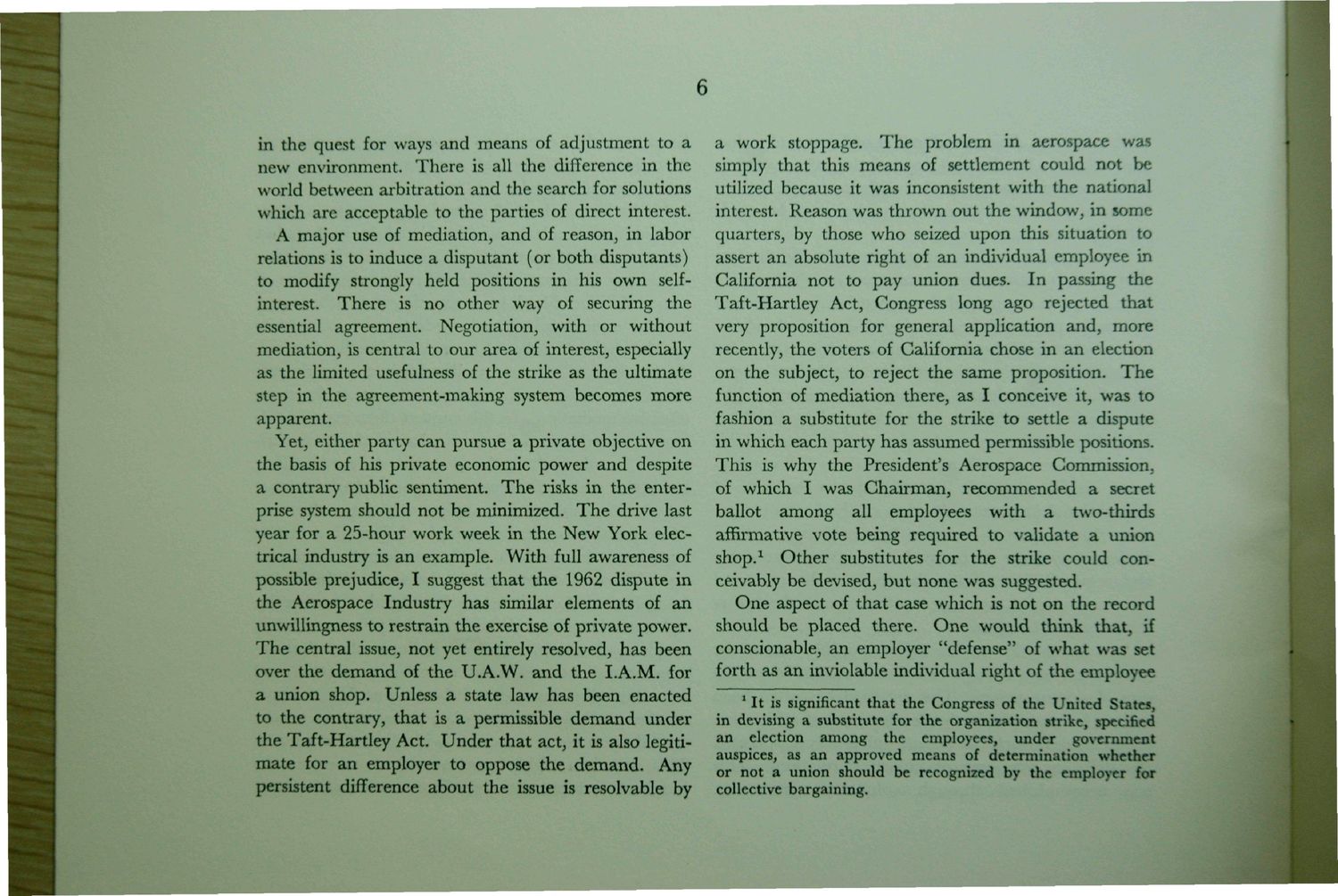| |
| |
Caption: Dedication - Labor and Industrial Relations
This is a reduced-resolution page image for fast online browsing.

EXTRACTED TEXT FROM PAGE:
6 in the quest for ways and means of adjustment to a new environment. There is all the difference in the world between arbitration and the search for solutions which are acceptable to the parties of direct interest. A major use of mediation, and of reason, in labor relations is to induce a disputant (or both disputants) to modify strongly held positions in his own selfin terest. There is no other way of securing the essential agreement Negotiation, with or without mediation, is central to our area of interest, especially as the limited usefulness of the strike as the ultimate step in the agreement-making system becomes more apparent. Yet, either party can pursue a private objective on the basis of his private economic power and despite a contrary public sentiment. T h e risks in the enterprise system should not be minimized. The drive last year for a 25-hour work week in the New York electrical industry is an example. With full awareness of possible prejudice, I suggest that the 1962 dispute in the Aerospace Industry has similar elements of an unwillingness to restrain the exercise of private power. T h e central issue, not yet entirely resolved, has been over the demand of the U.A.W. and the I.A.M. for a union shop. Unless a state law has been enacted to the contrary, that is a permissible demand under the Taft-Hartley A c t Under that act, it is also legitimate for an employer to oppose the demand. Any persistent difference about the issue is resolvable by a work stoppage. T h e problem in aerospace was simply that this means of settlement could not be utilized because it was inconsistent with the national interest Reason was thrown out the window, in some quarters, by those who seized upon this situation to assert an absolute right of an individual employee in California not to pay union dues. I n passing the Taft-Hartley Act, Congress long ago rejected that very proposition for general application and, more recently, the voters of California chose in an election on the subject, to reject the same proposition* T h e function of mediation there, as I conceive it, was to fashion a substitute for the strike to settle a dispute in which each party has assumed permissible positions. This is why the President's Aerospace Commission, of which I was Chairman, recommended a secret ballot among all employees with a two-thirds affirmative vote being required to validate a union shop. 1 Other substitutes for the strike could conceivably be devised, but none was suggested. One aspect of that case which is not on the record should be placed there. O n e would think that, if conscionable, an employer "defense" of what was set forth as an inviolable individual right of the employee It is significant that the Congress of the United States, in devising a substitute for the organization strike, specified an election among the employees, under government auspices, as an approved means of determination whether or not a union should be recognized by the employer for collective bargaining. 1
| |